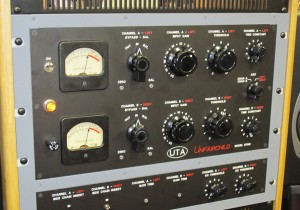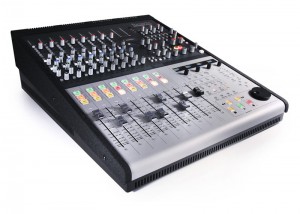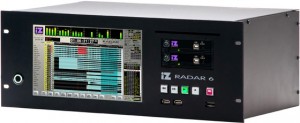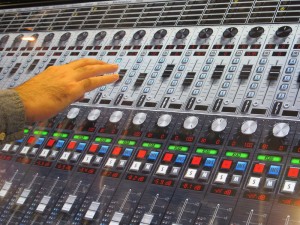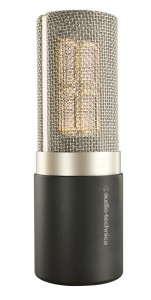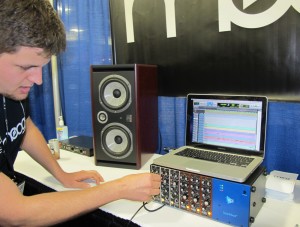New Technology Highlights from AES 2012
The AES Convention has always been a time for new product announcements, and this year was no different.
Although there were markedly fewer exhibitors this year than usual, almost all of the companies that did show up seemed to be announcing new tools, which ranged from the practical to the idealistic to the downright unexpected. Companies with nothing to announce, it seemed, just stayed home.
Plugins
This convention was at its leanest on the software front, with many of the biggest players in that field sitting out. Absent were giants like Apple, Avid, and Steinberg, and this allowed smaller companies like SoundToys, Sonnox and iZotope to soak up the lion’s share of the exposure on the plugin end.
SoundToys announced their new full-fledged Radiator saturation plugin, and made clear that this quirky-yet-satisfying tone shaper and last year’s Devil Loc plugin mark the beginning of a whole new series of plugins that aim to recapture the sound of classic unique-and-boutique audio processors.
Meanwhile, Shadow Hills took a surprise leap into software, unveiling their own Shadow Hills Mastering Compressor Plugin, made in conjunction with brainworx for UAD.
But what little software that was on display did not focus solely on emulation and re-creation.
For their part, iZotope unleashed Trash 2, a forward-looking plugin devoted to “audio mangling, distortion, and experimentation.” Then, in a display of a 180-degrees of diversity, the company announced the decidedly more pragmatic and mild-mannered Insight – a multifunction loudness meter made to ease compliance with the new CALM Act, which regulates audio levels for broadcast.
Two Visions for the Future of Analog:
A Return to 20th Century Simplicity, or a full Embrace of 21st Century Digital Control
A few companies this year introduced dazzling new products with a vintage bent. Eric Valentine’s UnderToneAudio was chief among them. Their custom consoles and channel strips – developed with Larry Jasper of Quad Eight – are about as uncompromising as a pure analog circuit can get.
The same might also be said for UTA’s all-tube UnFairchild Compressor, which takes the smooth, thick tone of the original Fairchild and adds a little bit of muscle and few, significantly more useful, attack and release presets.
But for every vintage-minded developer like UTA or Tree Audio or Mara Machines, it seemed there were two manufacturers intent on bringing digital features to analog circuits. A couple of high-profile new hybrid consoles promised to combine the best of both analog and digital workflows.
Focusrite for one, joined forces with Audient to release the 2802 Console, a compact analog mixing desk and summing unit. It comes complete with insert points, motorized faders, and digitally-controlled analog VCA bus compressor.
All this means that the 2802 integrates easily with both analog rack gear and DAW-based, fast & easy recall. With a prestigious collaborator like Audient and a street price around $5,000 it wouldn’t be surprising if this tactile, recallable analog mixing board makes a major dent in the hybrid mixing market.
On the higher-end of this concept, SSL released the new Duality Pro-Station, an analog/digital hybrid that places the DAW front-and-center and includes SSL’s recently developed A-FADA automation system.
Simply put, the hybrid Duality Console is a full-scale analog desk designed for digital work flow. It can easily follow the automation written into a DAW, making complete and instant recall painless.
But the continued proliferation of digital control of analog circuits wasn’t limited to desks. Smaller devices from monitor controllers (Grace) to Microphones (Lewitt) embraced the concept this year.
There’s even a new 500-series Pultec EQ (BetterMaker) that offers complete digital recall and a USB port built right into the front panel.
Two Competing Visions for the Future of Digital:
Turn off Your Screen, or Turn it into the Main Attraction
Two of the most unexpected announcements revolved around the unveiling of digital audio systems that represent a true break from the norm.
On one side, there was the re-emergence iZ Technology with their release of RADAR 6, the newest iteration of their streamlined multi-track recorder.
The makers of RADAR emphasize build quality, the sound of their AD converters, and the robust simplicity of the system’s analog-style workflow over the bells and whistles of the modern desktop DAW.
That final point is where RADAR is fundamentally unique. It is in essence, a reliable, straight-forward hard-disk recorder and has a lot more to do with the tape machines of yesteryear than the screen-based DAWS of today.
The platform does offer some editing ability, and even an optional touch-screen to access the menus. But don’t expect to mix on it or run any plugins. On the other hand, don’t expect to worry about version compatibility, software updates, virus checks, eye strain or the distractions of email and YouTube.
This straightforward recording system demands a conventional recording console, relies on inexpensive and easily swappable solid state drives, and promises rock-solid reliability without system crashes and pinwheels of death.
On the other end of the spectrum lies Steven Slate’s Raven control surface and interface.
This unprecedented mixing system occupied the busiest booth at the entire convention. Even as the events simmered down on the final day, crowds thronged this 46” touchscreen, and onlookers gently elbowed their way in for a closer look.
But despite its forward-looking concept, the crowds did not seem to view the Raven as a curiosity, but rather as a pragmatic and logical next step in the evolution of the DAW. The majority of the under-40 crowd it seemed, could see themselves working happily on a system like this one.
Slate, for all their focus on showmanship, clearly put some serious thought and effort into making the implementation of this idea was as well-realized and feature-rich as any mature technology.
As of showtime, a few bugs remained, but they did nothing to reduce the excitement surrounding this touch-control system and proprietary HUI-based mixer.
To even begin to detail its surprisingly feature-rich implementation would require an article of its own. Suffice it to say that once perfected, the Raven is sure to become a viable new approach to studio control. And buyers are already lining up for it.
Microphones: A Quiet Revolution
Every year, the floor at AES is filled with lust-inducing high-end microphones that either faithfully recreate or aim improve on the classics. But often, there’s at least one standout that represents a clear break from the past. This year, there were two.
First was the Audio-Technica AT5040, a new flagship for the company which is meant to overtake the underrated, all-tube 4060 as the foremost ambassador of the line.
What makes the 5040 so remarkable is what’s under the hood. Instead of a single capsule, 4 matched diaphragms combine to offer an exceptionally large surface area and remarkably low self noise, without the transient smearing that would normally come from the added mass.
It’s a truly new vision for how capsules can be made, and what they can achieve, and brings together the best features of large and small diaphragm condensers.
Another set of microphones, the Sennheiser 9000 are a clear leap forward for live and broadcast engineers.
The 9000 series is likely to be overlooked by the studio press, as wireless units normally are, but they offer hidden implications for the studio world.
At its core, the 9000s are top-shelf wireless microphones with long-lasting rechargeable batteries and interchangeable capsules. But what makes them so groundbreaking, is that their digital capture is at a resolution of 24/96, and falls after an extremely short signal path built right inside the microphone.
After tens of millions of dollars in R&D over the course of a decade, the 9000 series represents a true raising of the bar in professional wireless. It is the first inarguably lossless wireless mic system, and its modular and expandable rackmount receiver means that buying channels in bulk can become increasingly tidy and cost-effective.
It may take some time for us to feel the true impact of these developments in the studio world, but the idea of an uncompromising wireless recording studio has just become radically more feasible. Within another 10 years, it might not seem so strange a concept at all.
500 Series Grows, Monitors Adapt
Two of the most consistent growth areas at this AES over the past couple years have been in the expansion of the 500 series units and the evolution of monitoring systems for DAW-based studios.
On the 500-series front, Radial launched its new SixPack lunchbox, bringing their solid build quality and added features to a smaller scale.
In addition to the previously mentioned BetterMaker, several vintage-inspired modules cropped up to got some serious attention: Daking revealed both a new 500 series compressor and EQ, Warm Audio released an API-inspired preamp, Moog introduced an analog delay, and Heritage Audio came out with an uncompromising re-creation of the Neve 1073.
Of course, all those new tones don’t matter much if you can’t hear them. Recognizing the need for superior monitoring options, high-end companies like Grace and Burl introduced practical systems for console-free rooms, while Lavry introduced their new Latency Killer — a “Zero-Latency Cue Mix System.”
Meanwhile, ADAM, one of the fastest growing high-end speaker companies took a step into the aspiring prosumer market with their new F Series. The price? Just half that of their affordable, high-performance A series. They, like so many growing companies, have discovered that the best way to expand market share is sometimes to open up to entirely new ones.
Justin Colletti is a producer/engineer, professor and journalist who lives in Brooklyn. He is a regular contributor to SonicScoop and edits the musician magazine Trust Me, I’m a Scientist.
Please note: When you buy products through links on this page, we may earn an affiliate commission.








